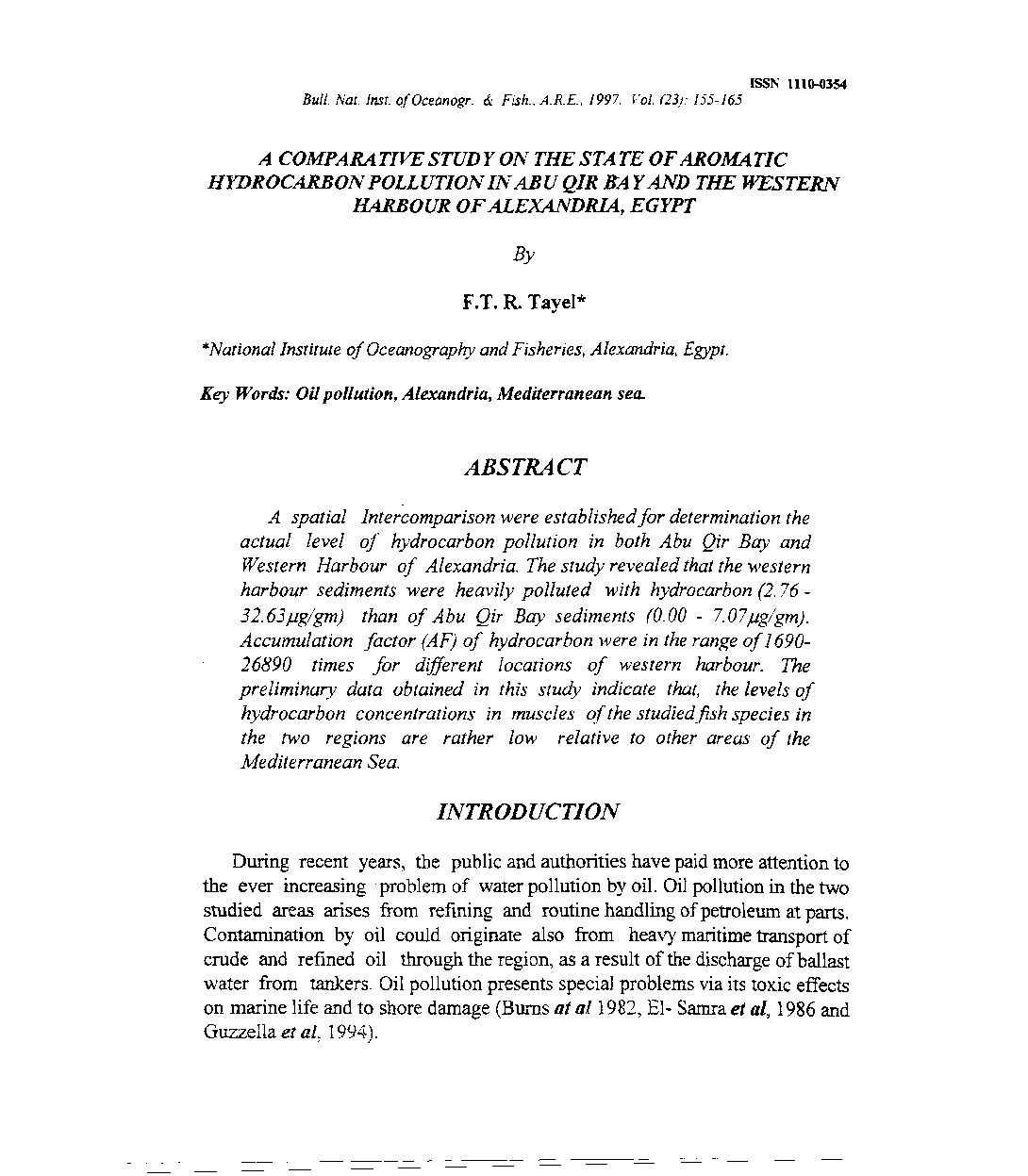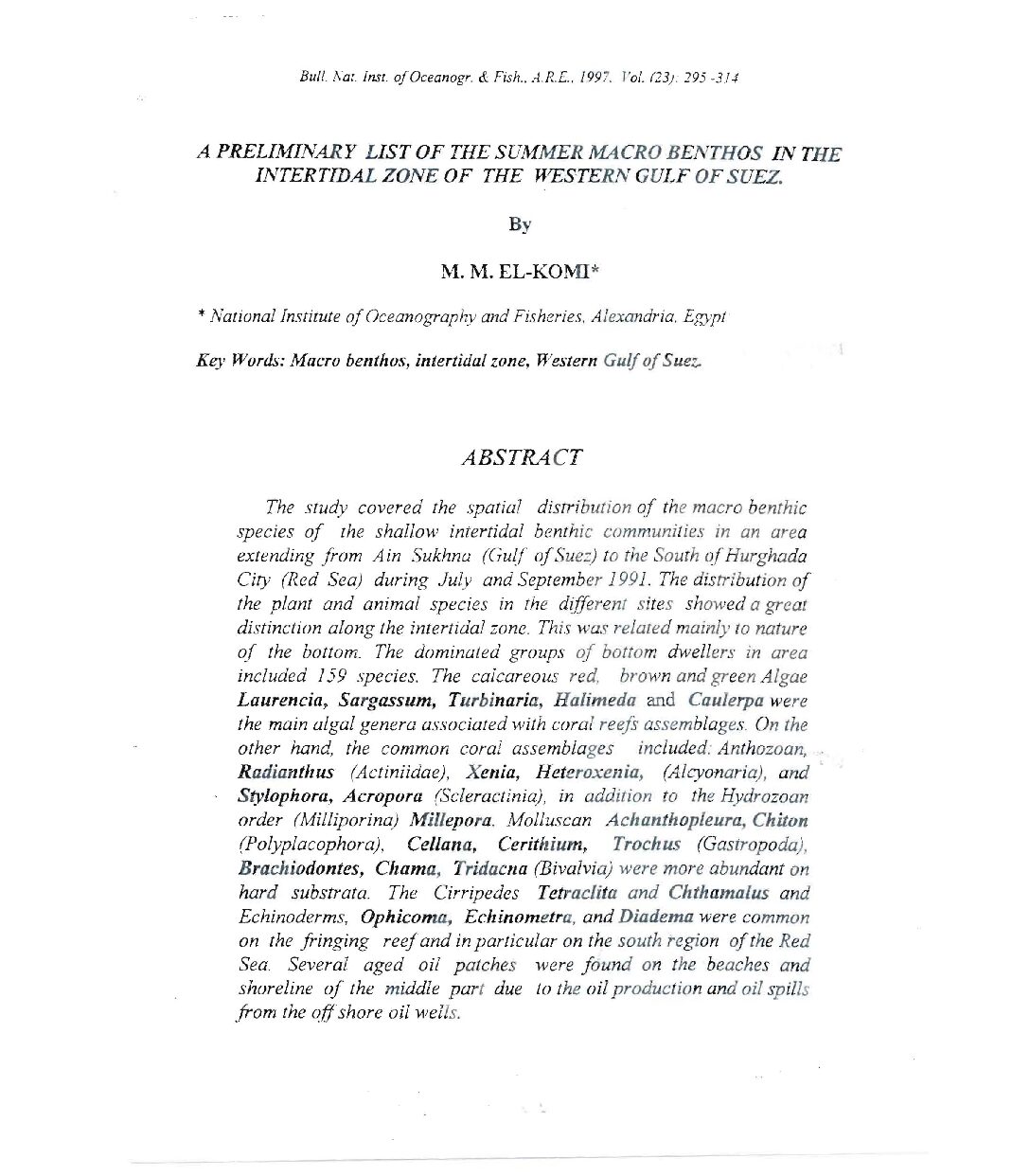Categories
vol-23EFFECT OF STOCKING DENSITY ON GROJfTH RATE, FEED
UTILIZATIONAND PROFITABILITY OFEUROPEANSEABASS
DICE1\TRARCHUS LABRAX REARED IN FLOATING CAGES
By
A. F. M. EI-SAYED* AND A. EI-GHOBASHY
*Oceanagraphy Department, Faculty a/Science, Alexandria University, Egypt.
Keywords: Seabass, Dicentrarchus labrax, fISh culture, profitability.
ABSTRACT
The effect of stocking density on growth rates, feed utilization
efficiency and profitability ofEuropean seabass, Dicentrarchus labrax
reared in floating cages was investigated. Fingerling fish (2. 9 g) were
stocked in 120 m
3
floating cages (l Ox1 Ox1. 2 m) placed in brackishwater
canal near Damietta, Egypt. Each cage was assigned to one offive
stocking densities; 30, 35, 40, 45, and 50 fishlm3
. The fish were fed
minced trashfish (Tilapia zillU) at a rate of5-10% oftheir body weights
per day, divided into two feedings, for 16 months. Water temperature
(C), oxygen content (mg/l), salinity, ammonia, and alkalinity were
measured weekly throughout the study. Growth and survival rates as
well as feed conversion efficiency were depressed with increasing
stocking density. Final weight (glfish) recorded was 234, 221, 206, 187
and 166 g at stocking density of 30, 35, 40, 45 and 50 jishlm3
,
respectively. The best economic fish performance, survival andprofit
index were achieved at a density of 35 fishlm3
. The cost/earning
analyses of the results indicated that cage culture ofEuropean seabass
in brackishwater in Egypt is highly profitable.







